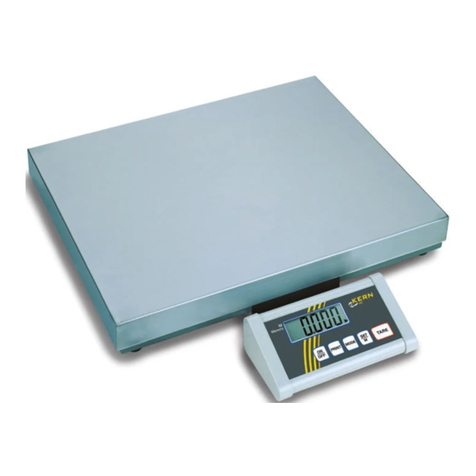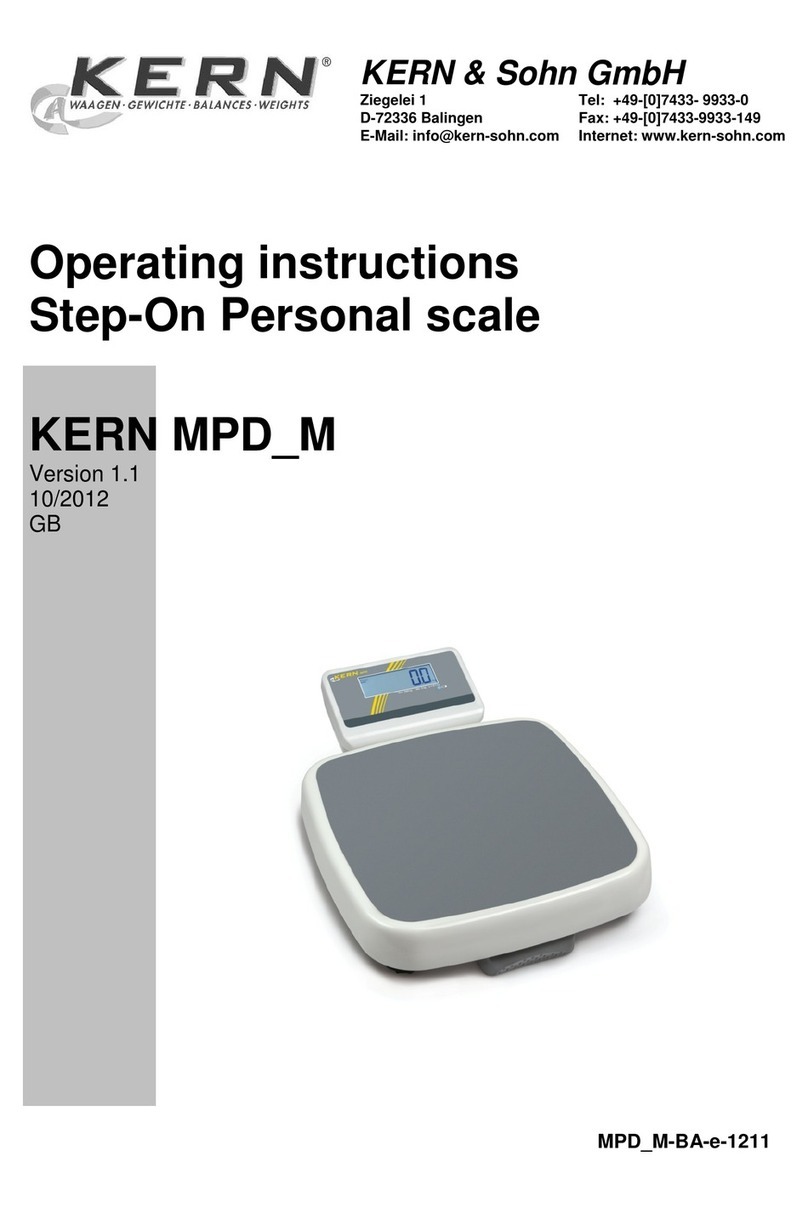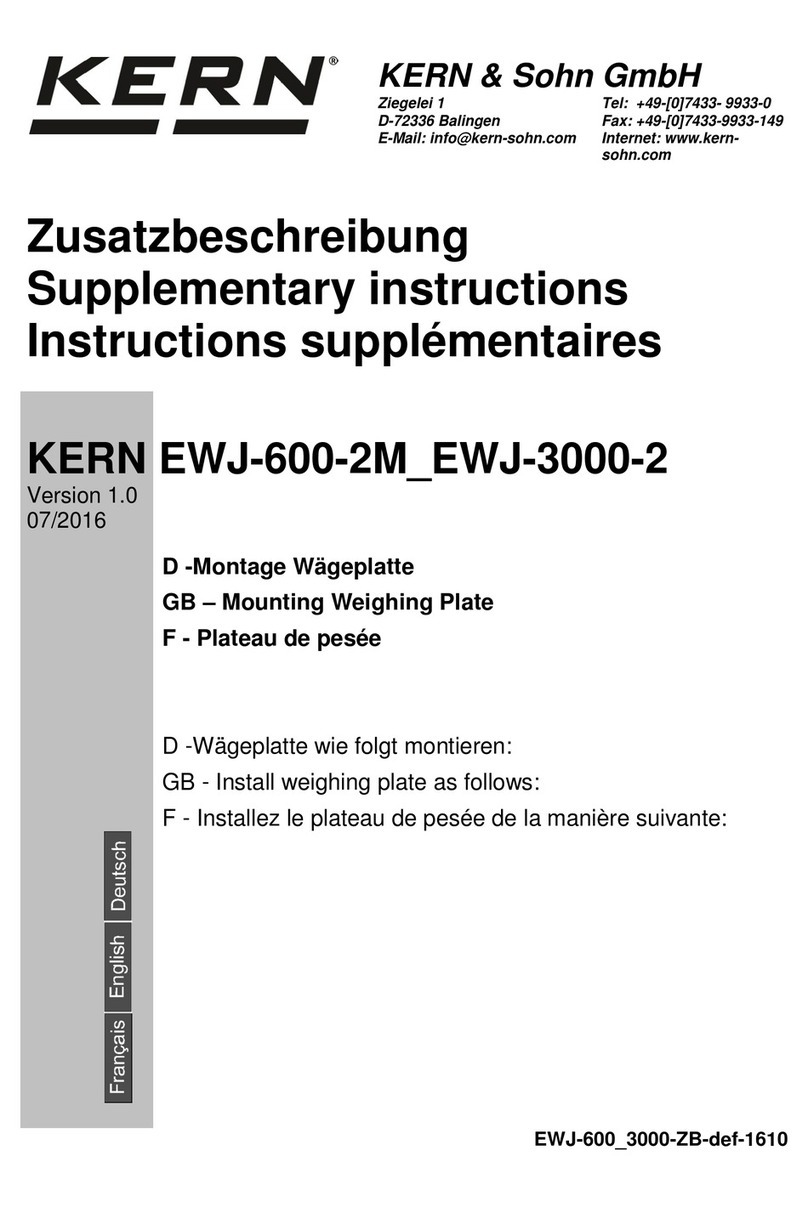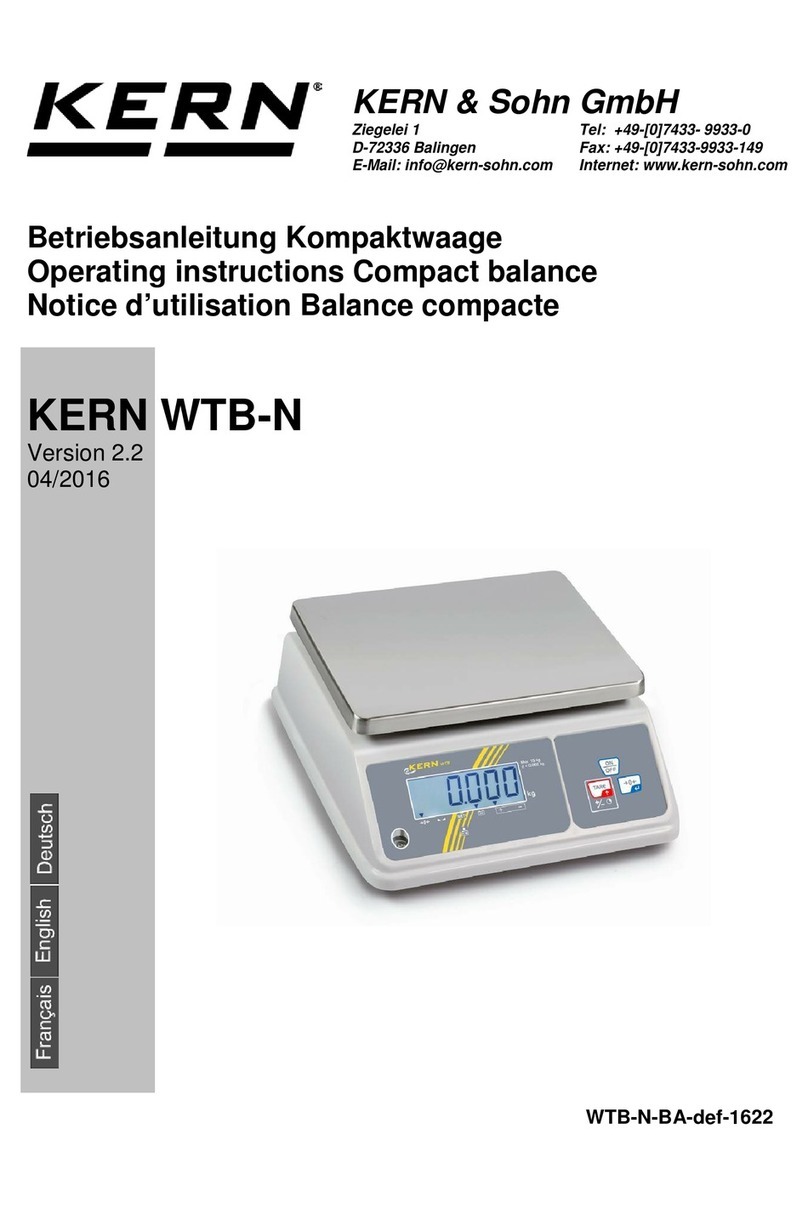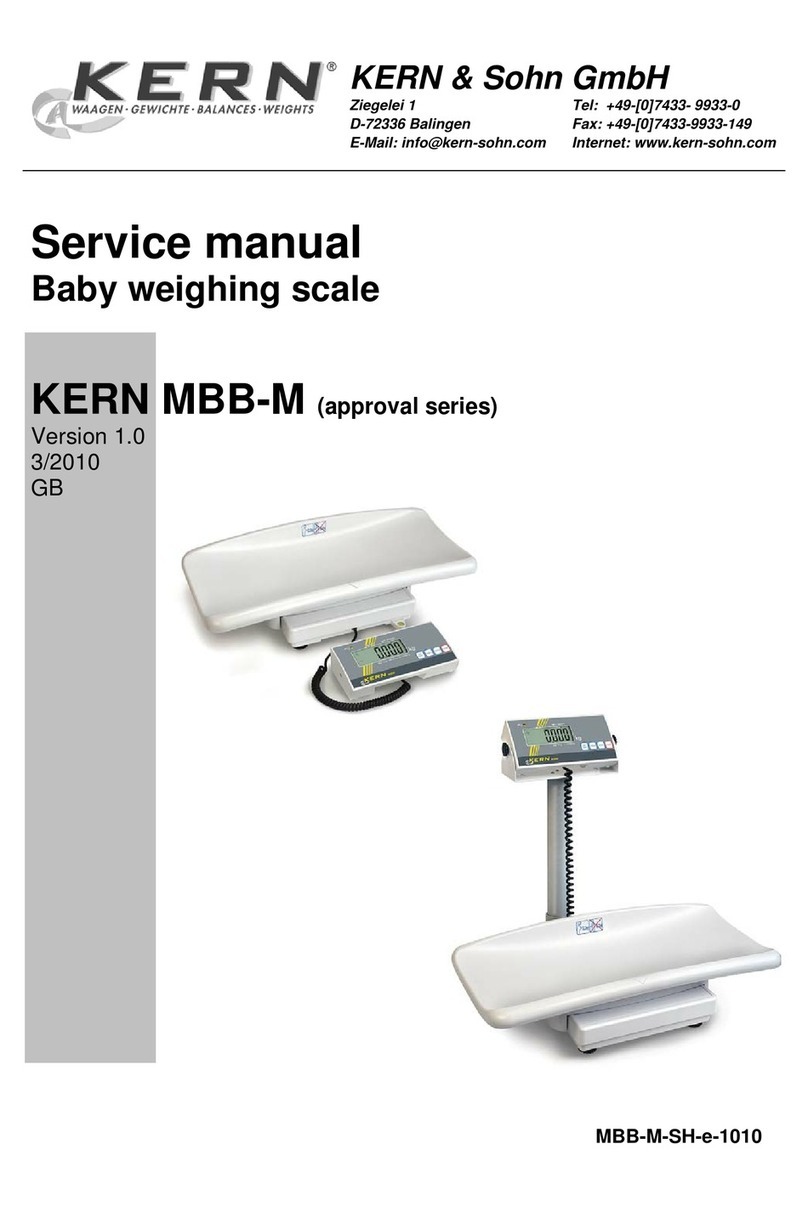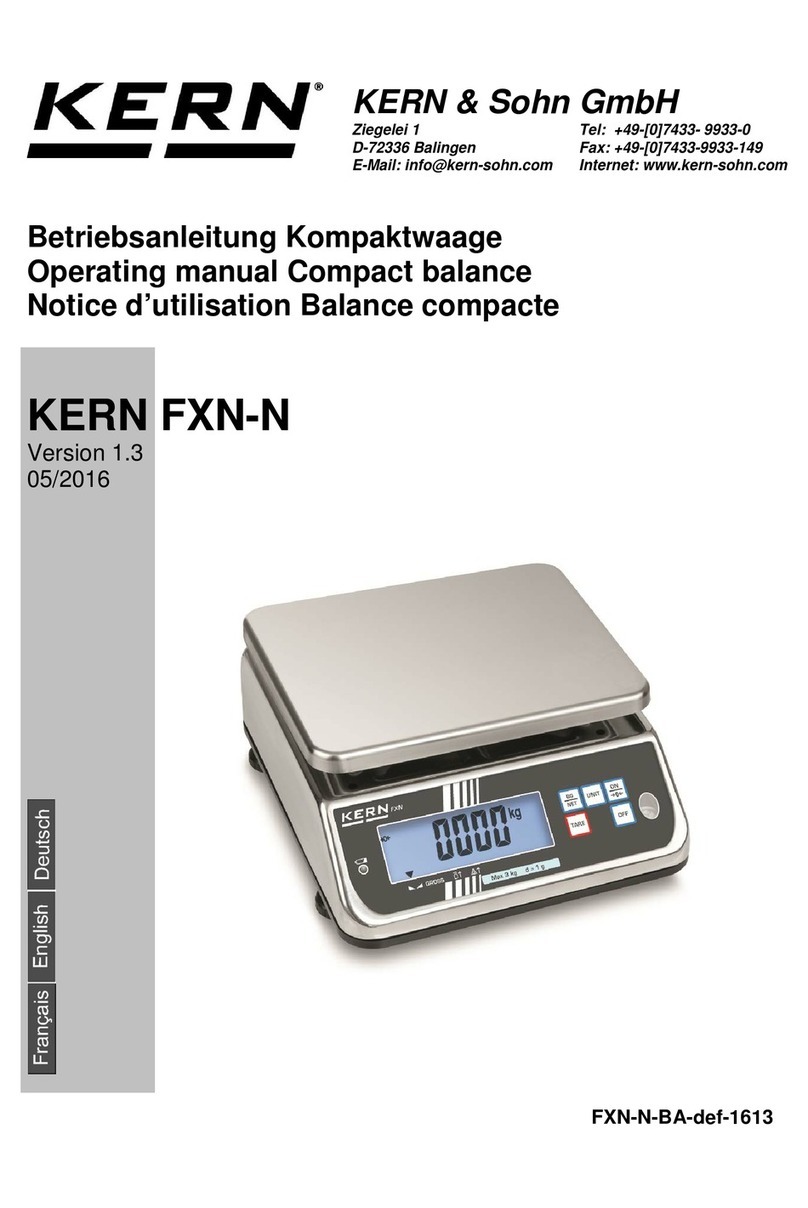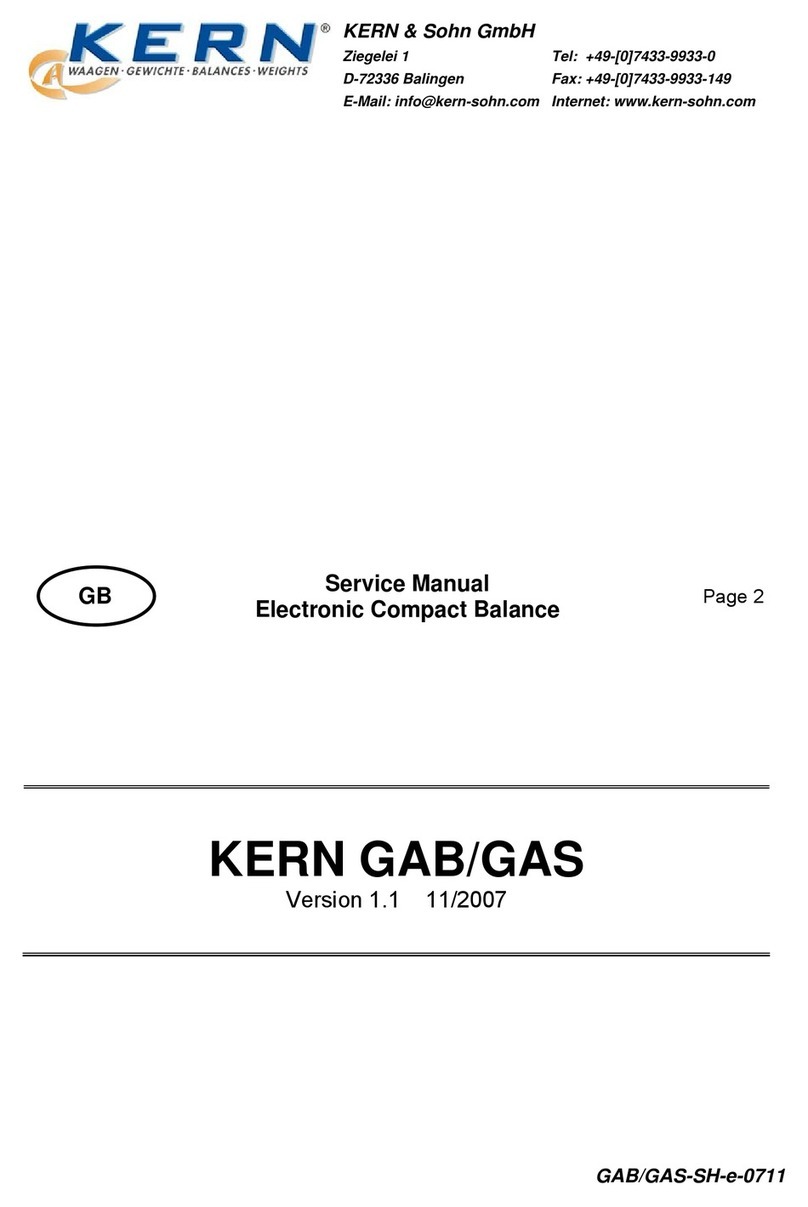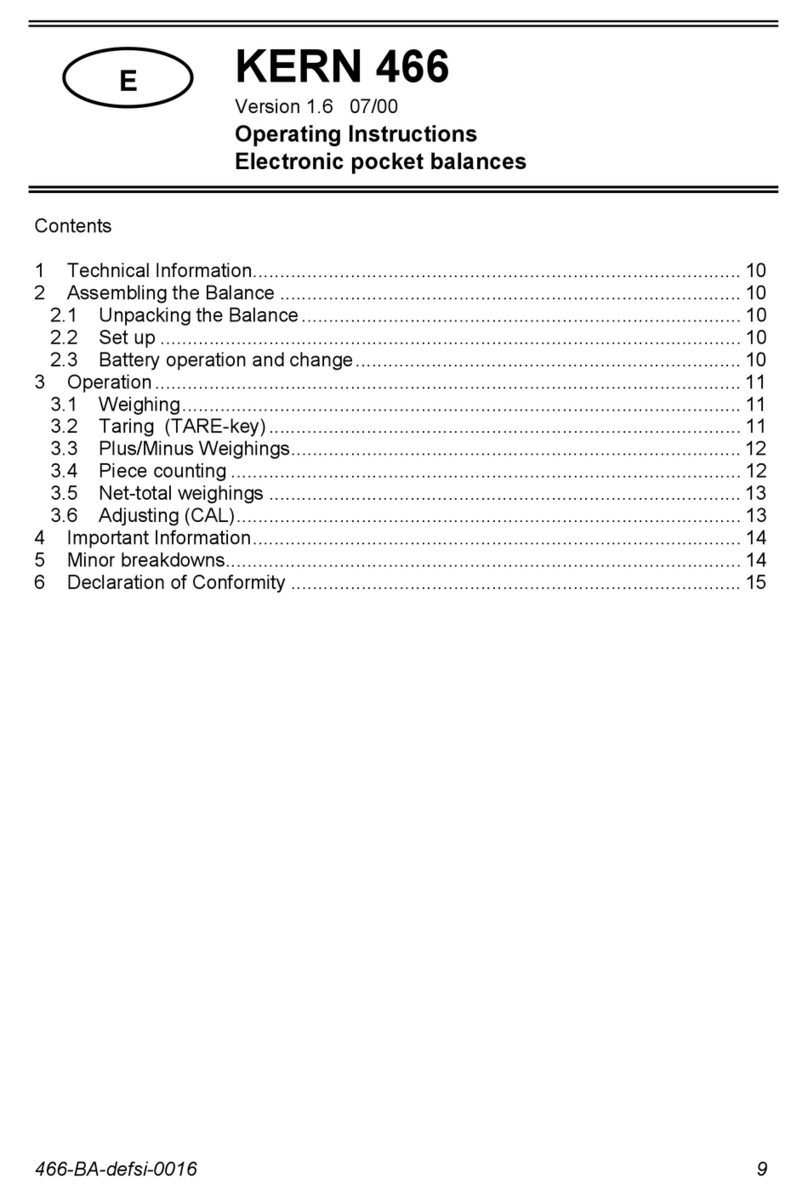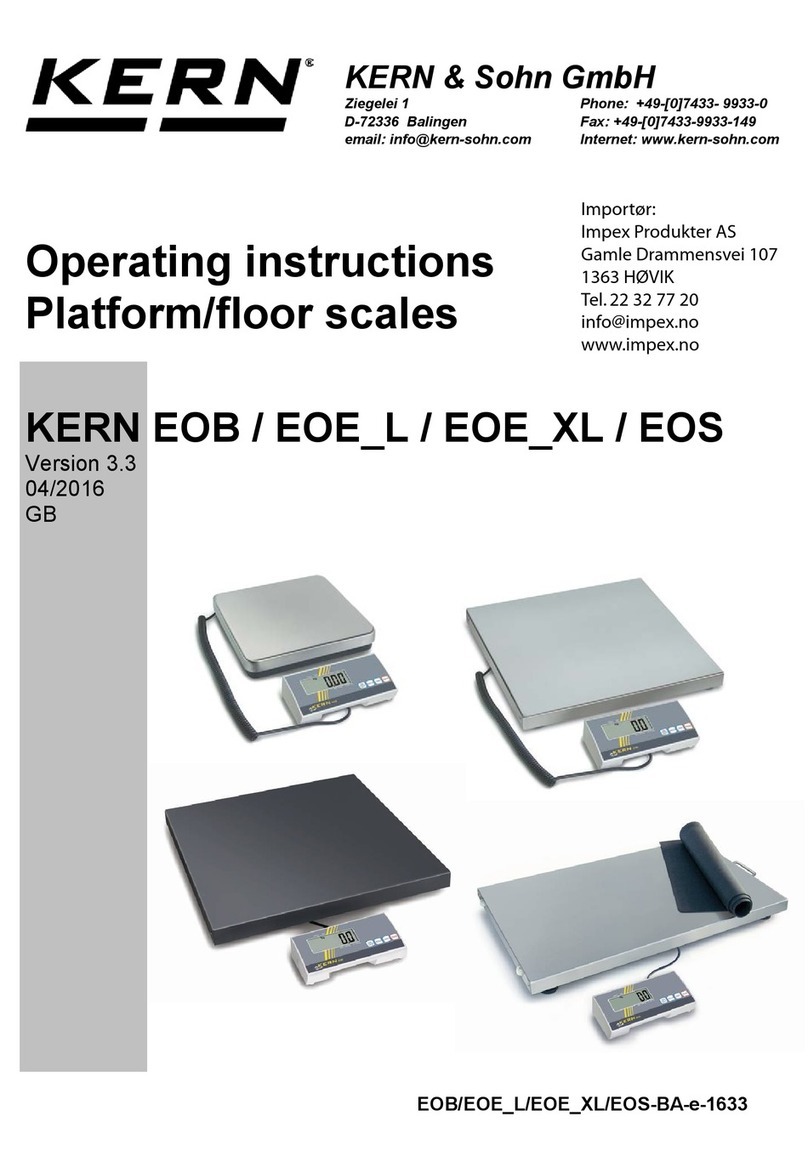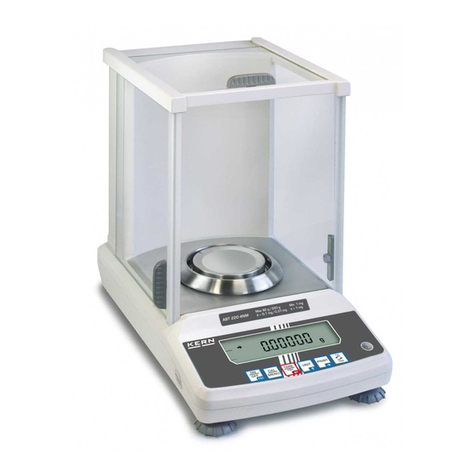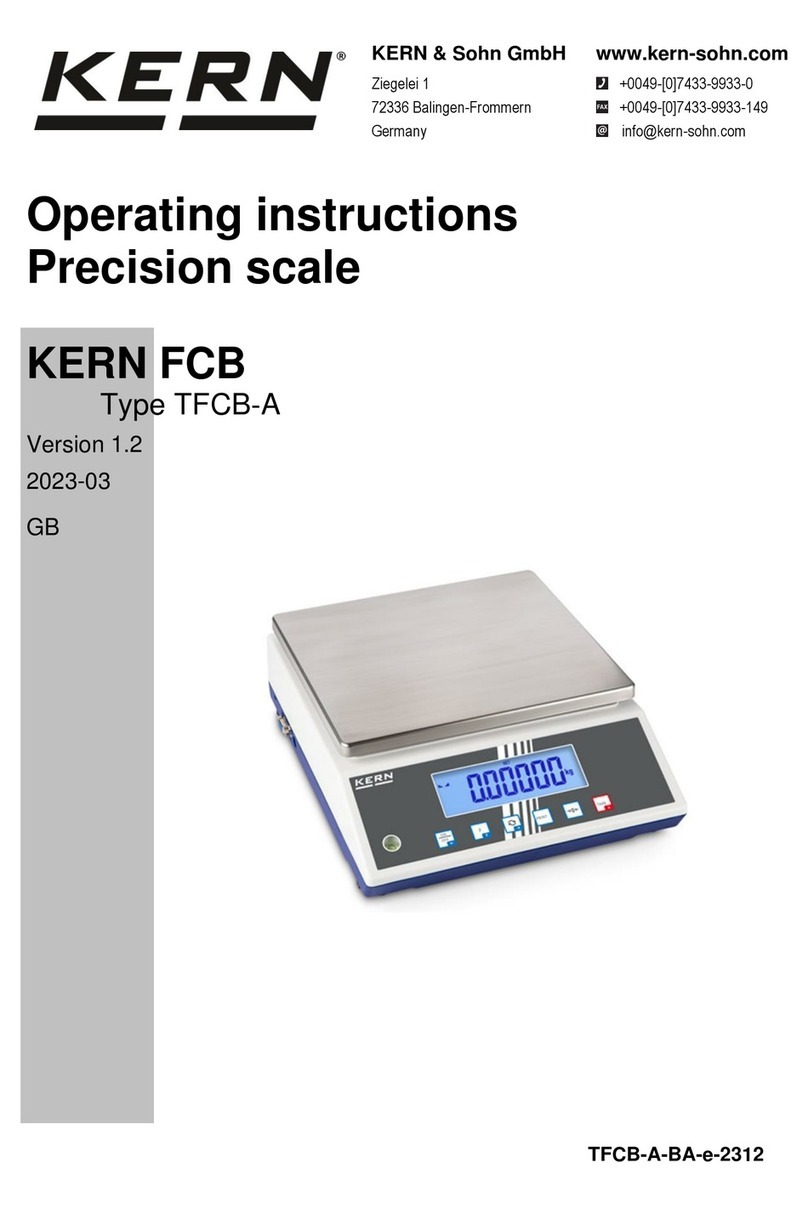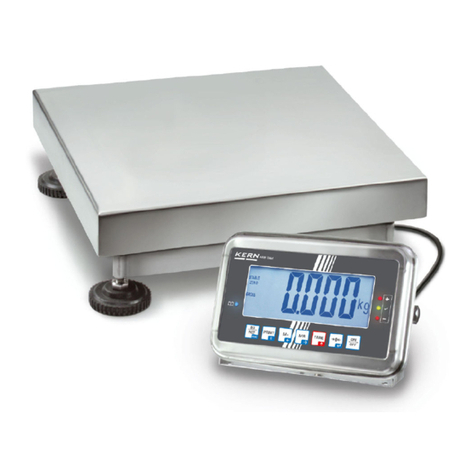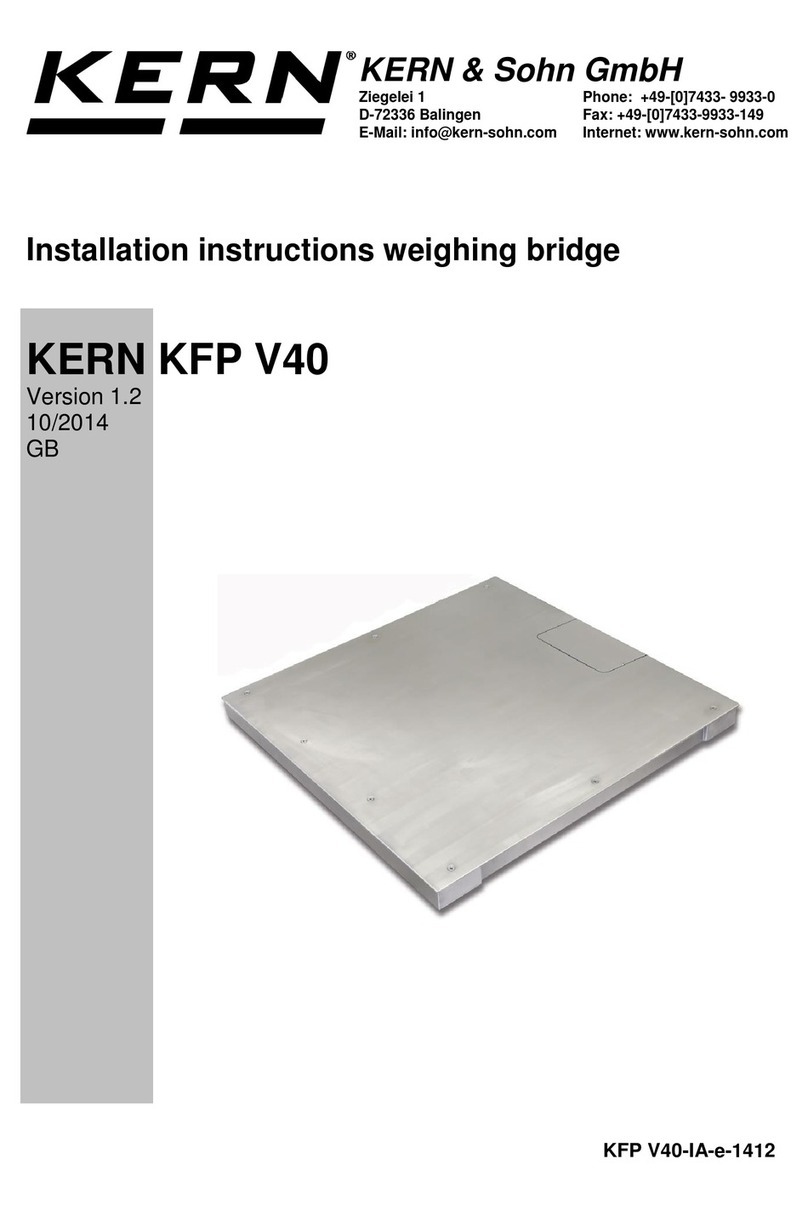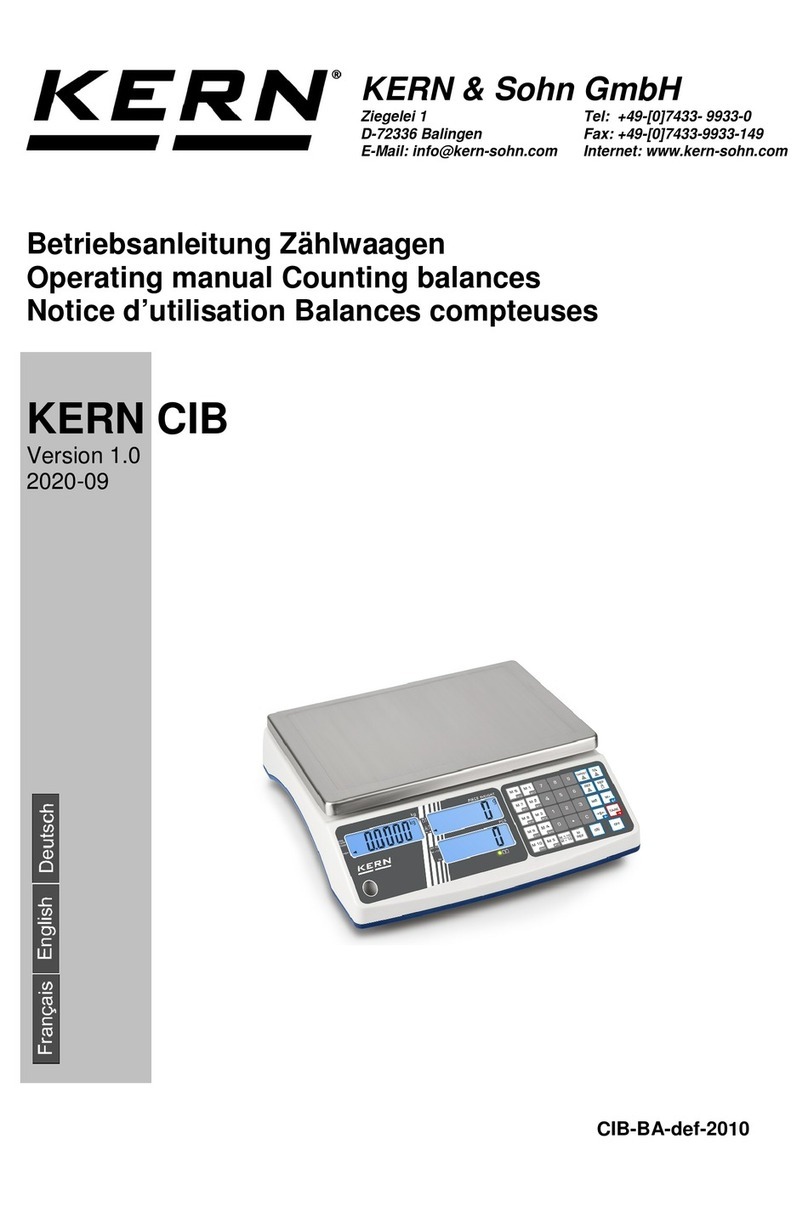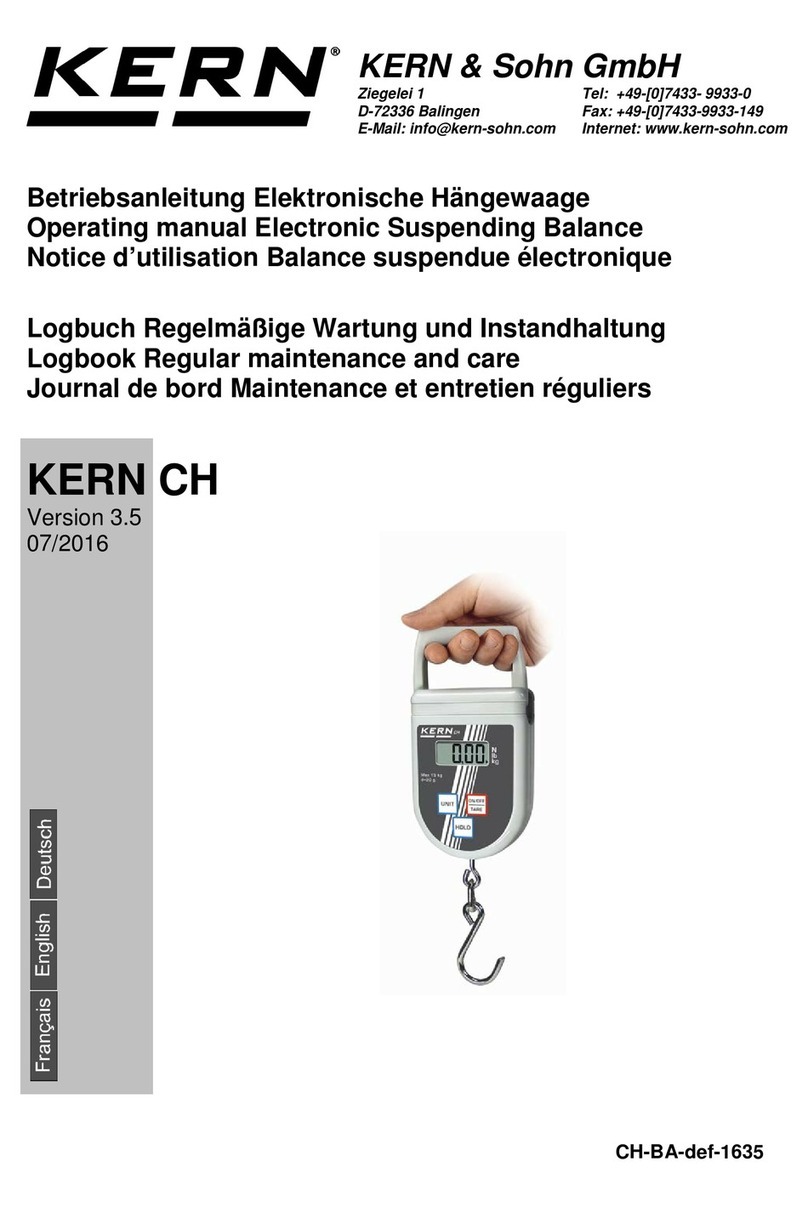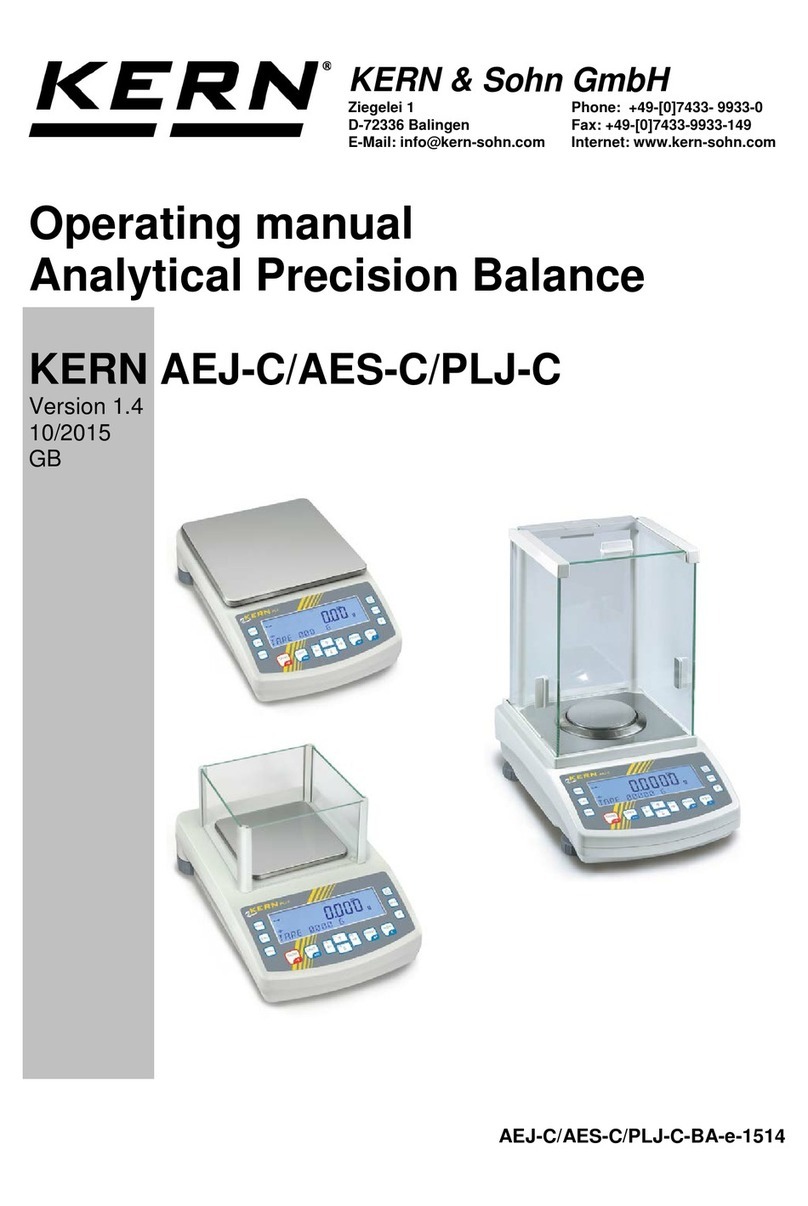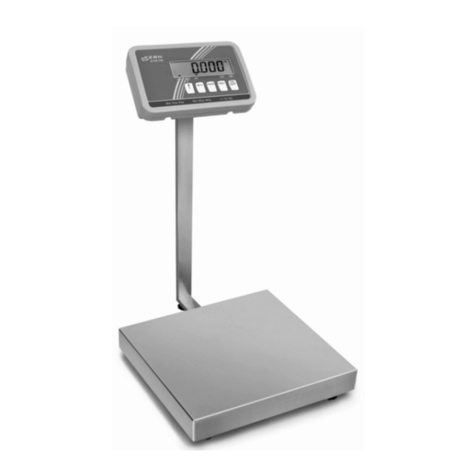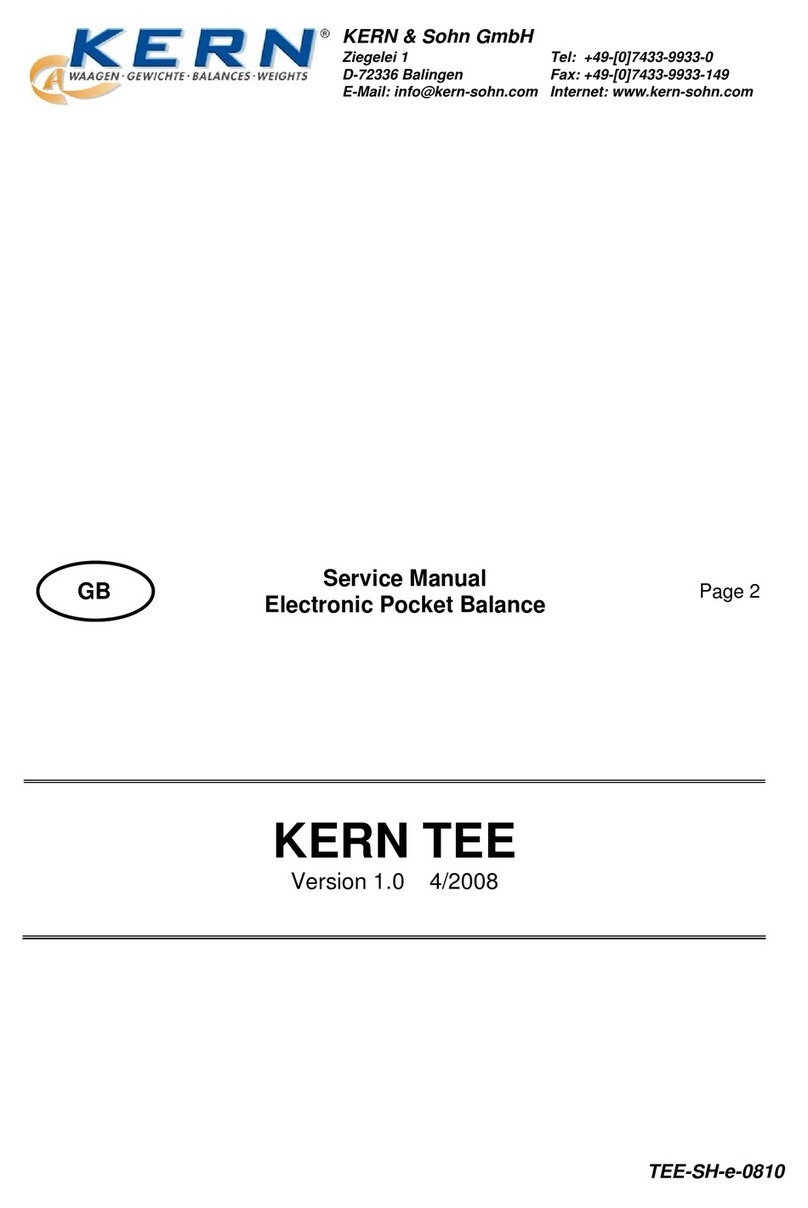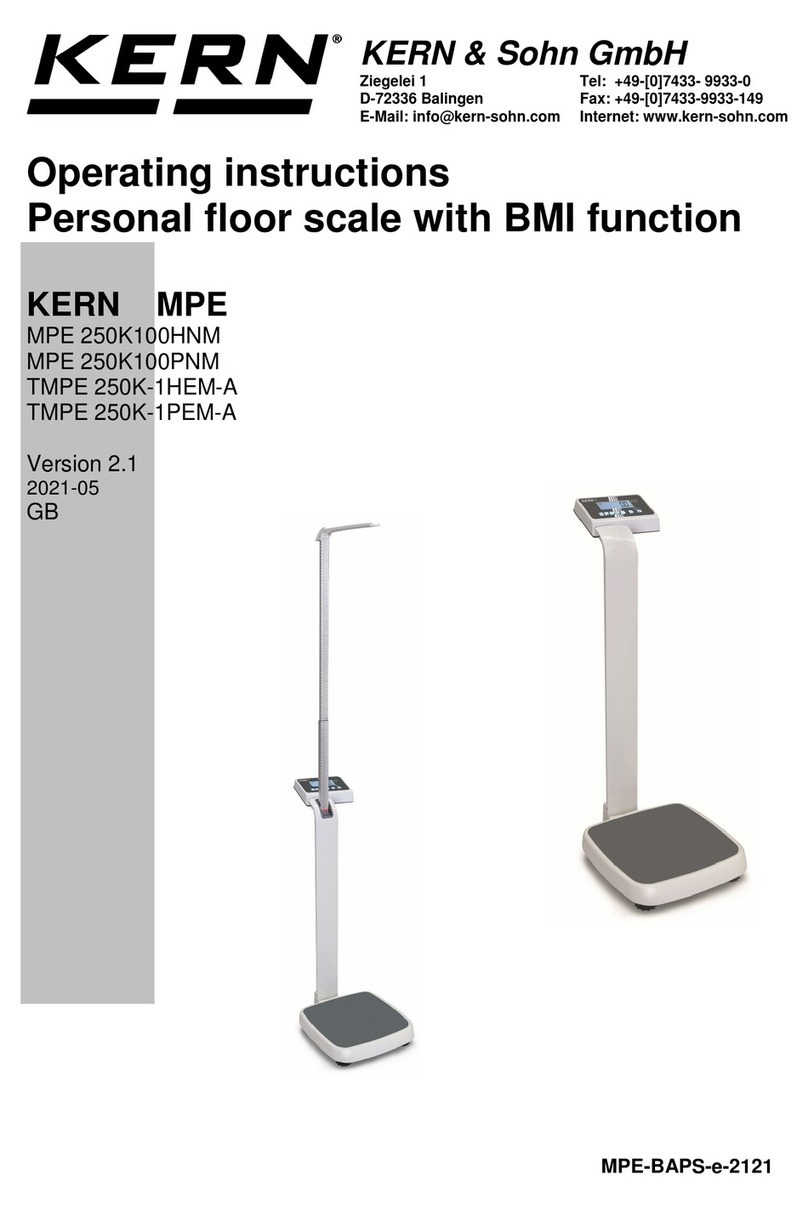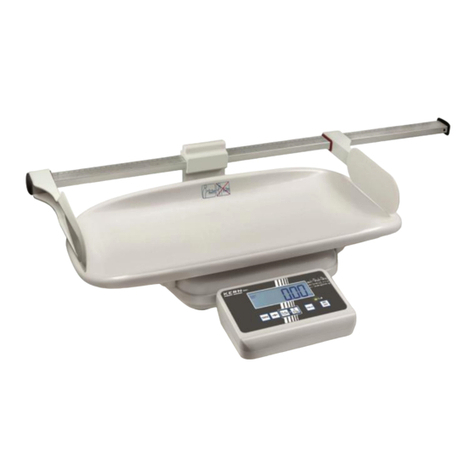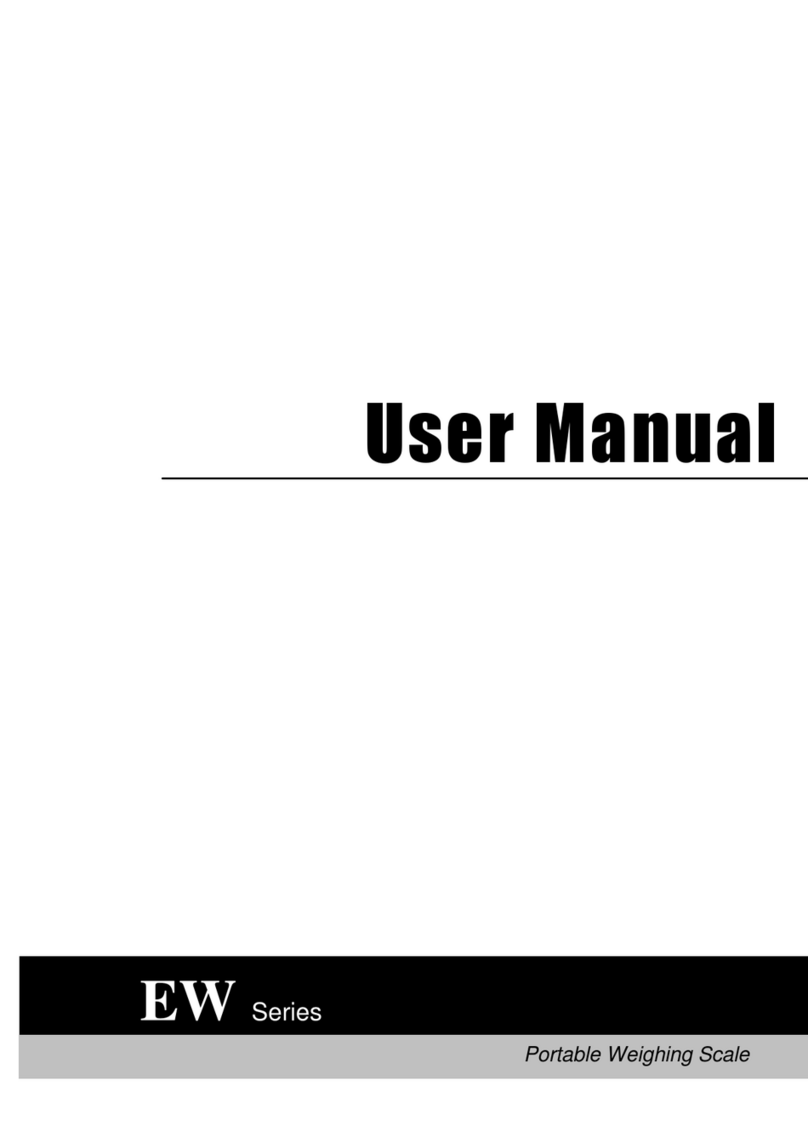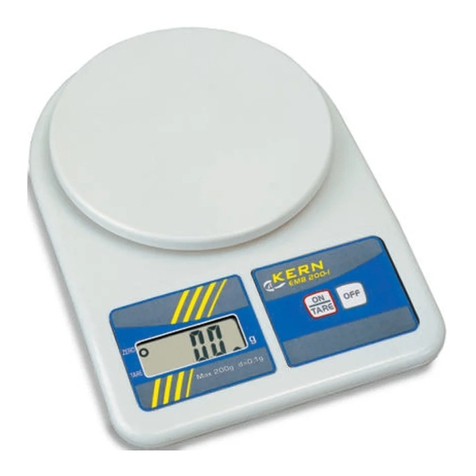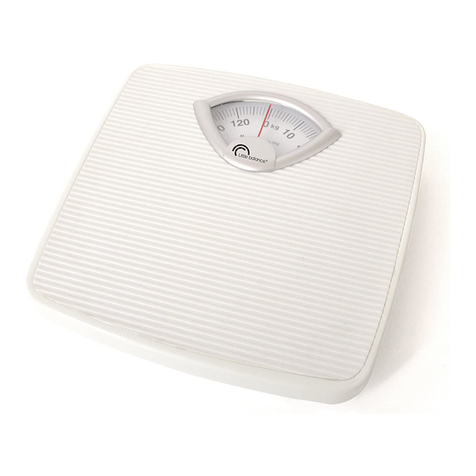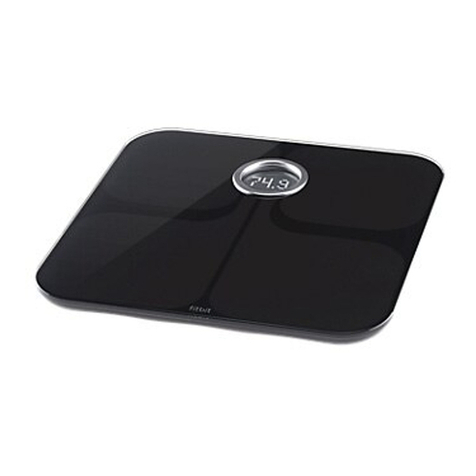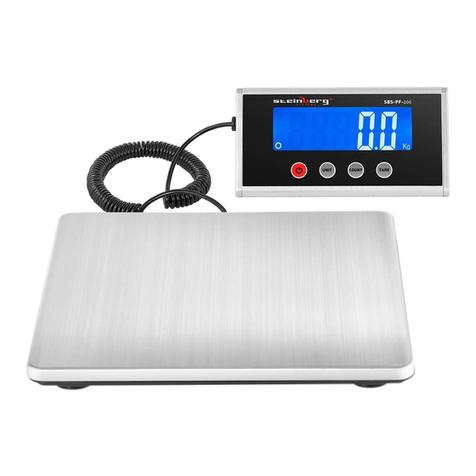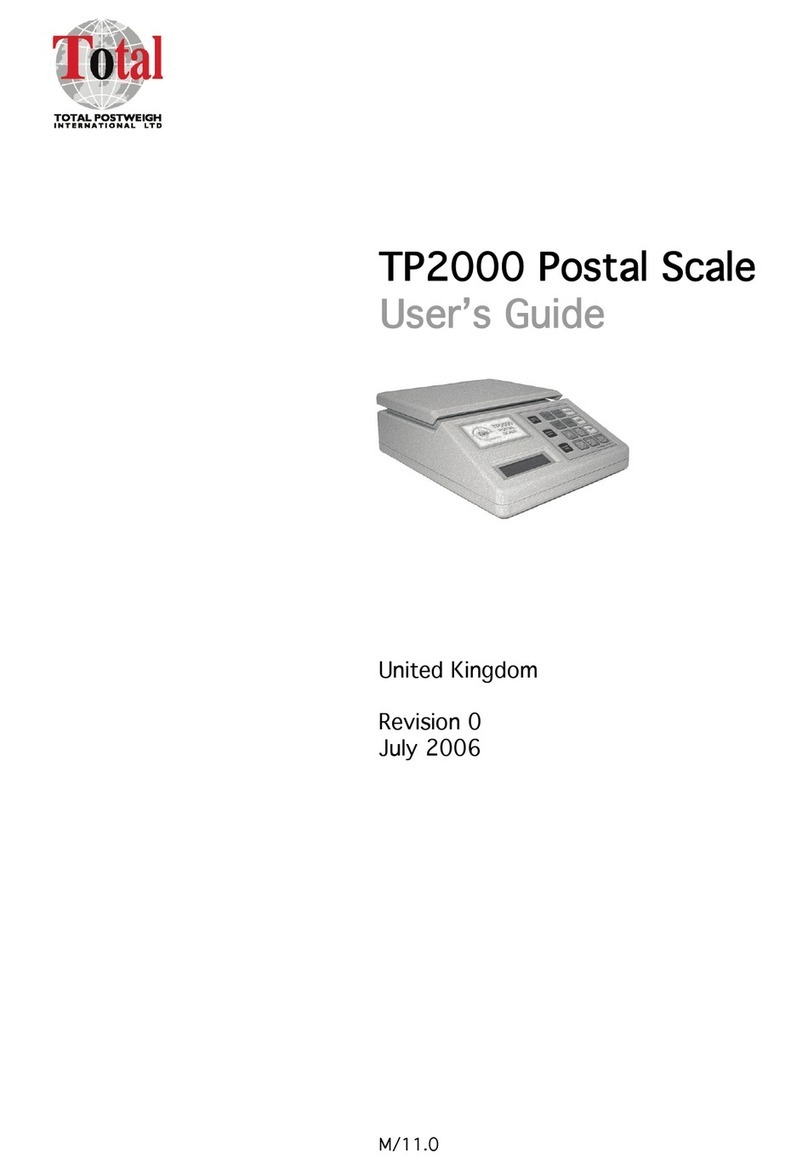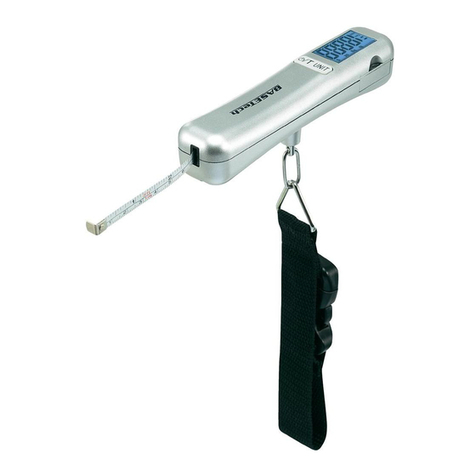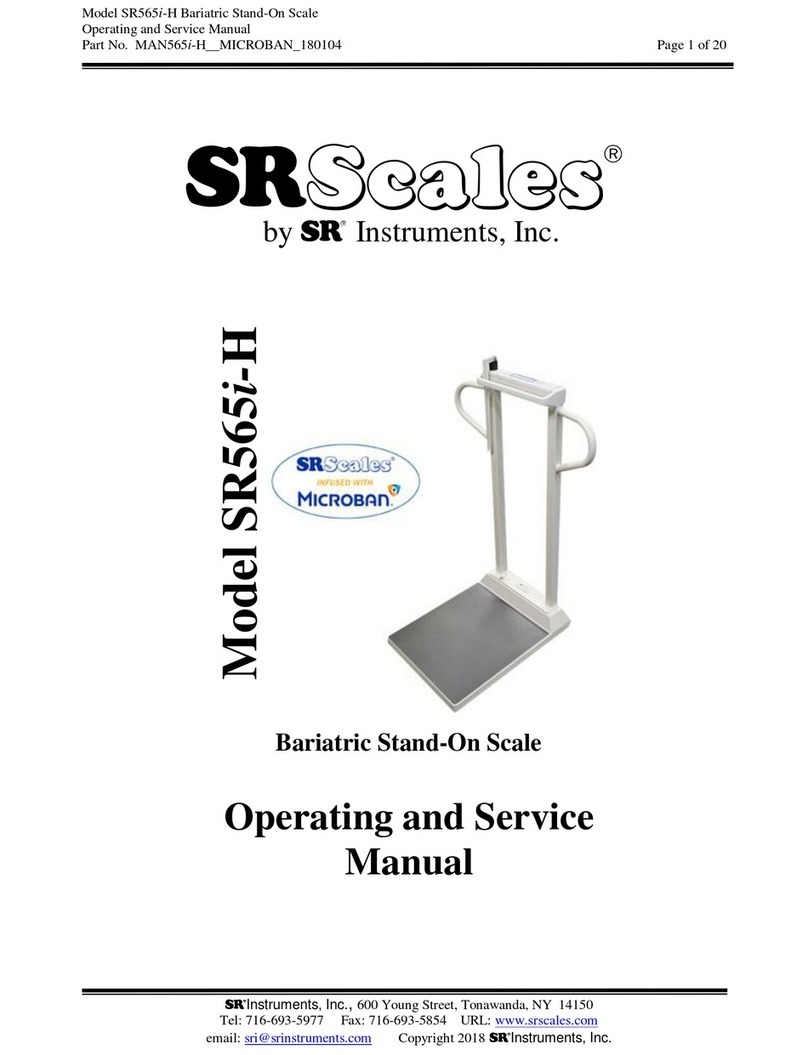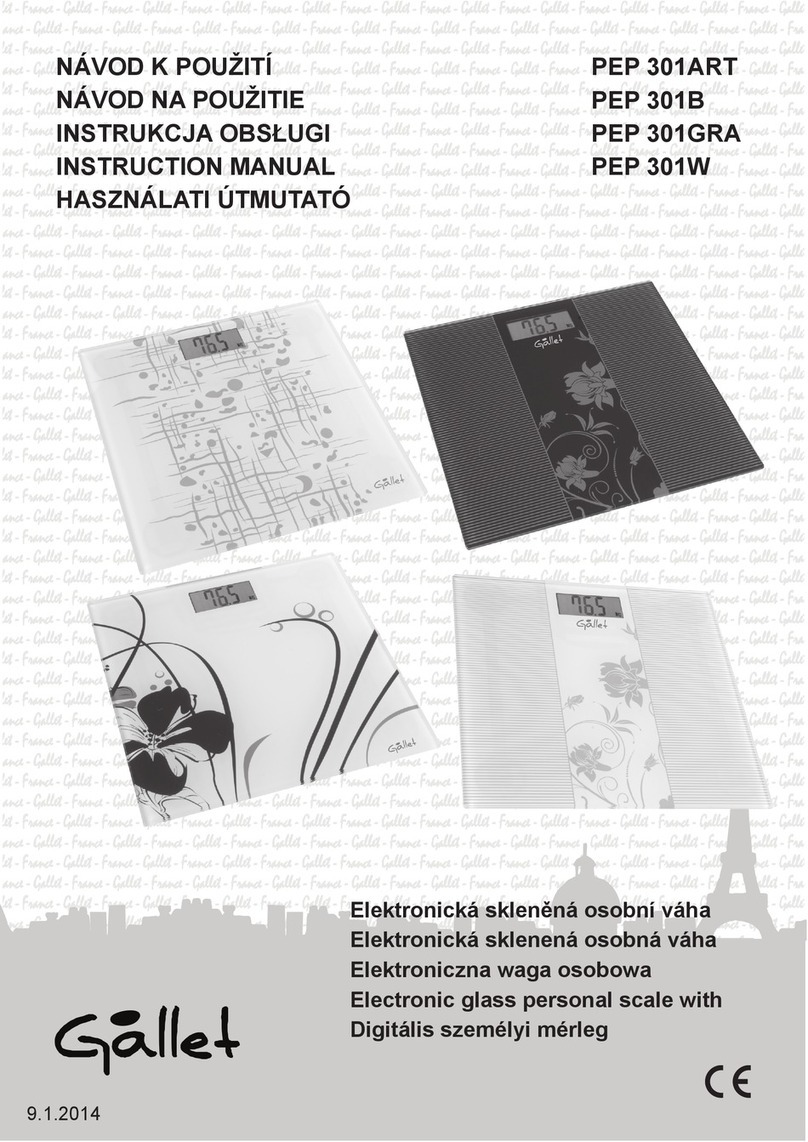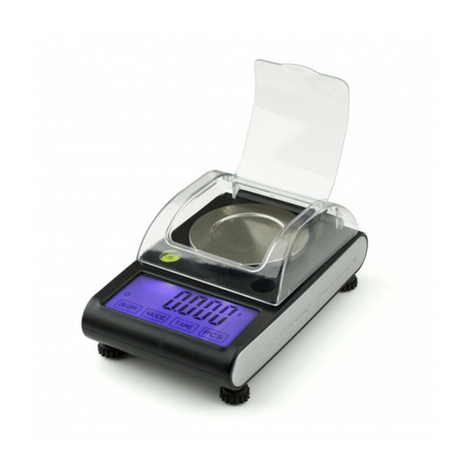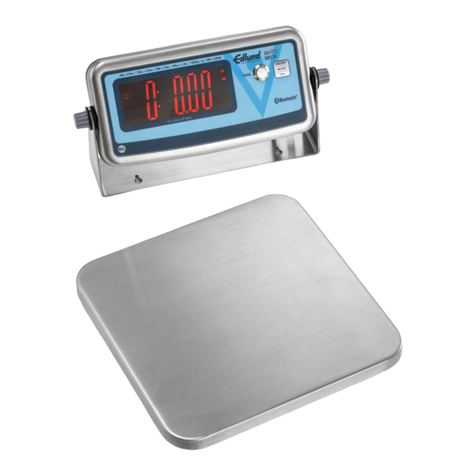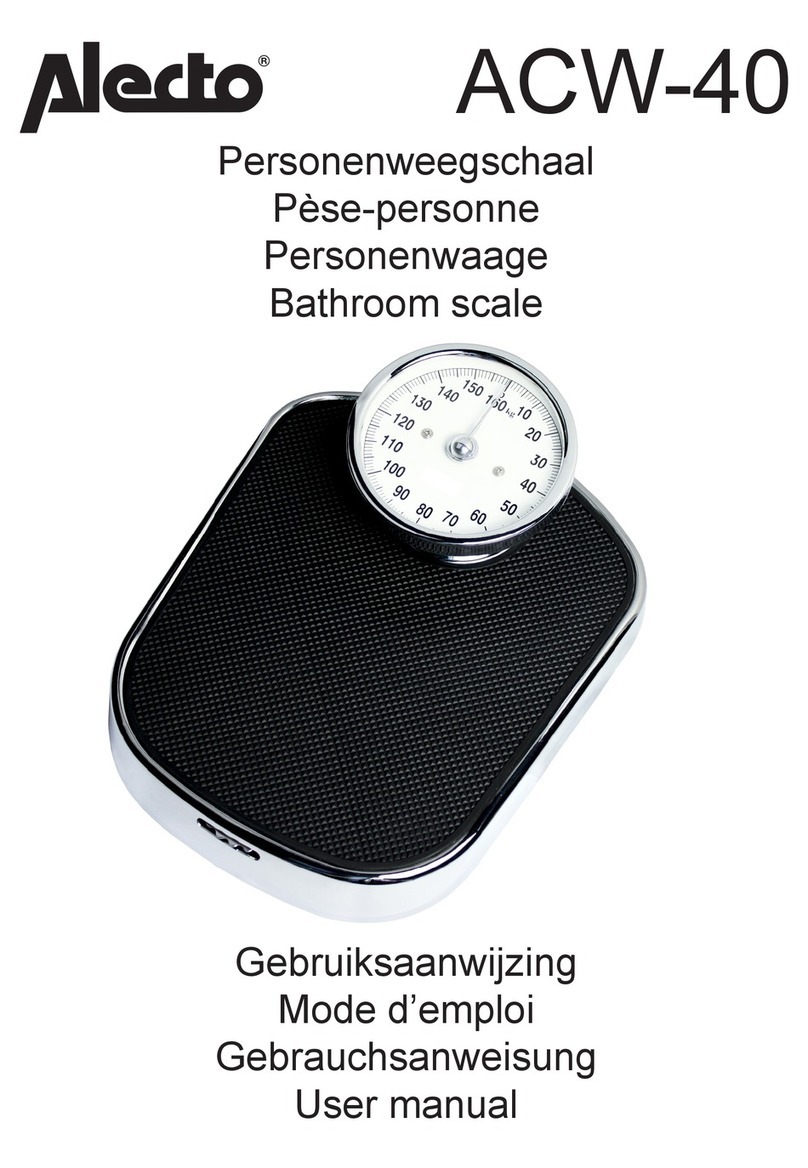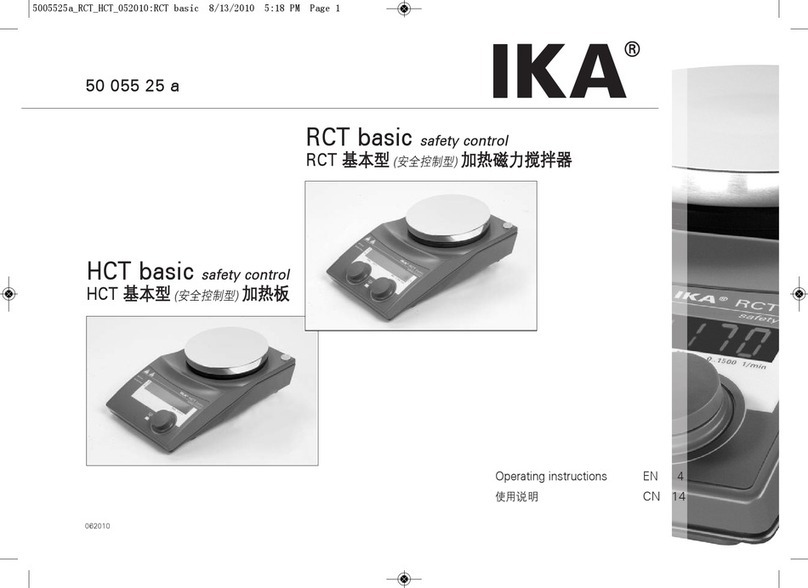DE-BA-e-1052
2
GB KERN DE
Version 5.2 09/2010
Operating instruction
Platform scale
Table of Contents
1Technical data ............................................................................................ 4
2Basic Information (General) .................................................................... 11
2.1 Proper use .......................................................................................................................... 11
2.2 Improper Use...................................................................................................................... 11
2.3 Warranty.............................................................................................................................. 11
2.4 Monitoring of Test Resources.......................................................................................... 12
3Basic Safety Precautions ........................................................................ 12
3.1 Pay attention to the instructions in the Operation Manual............................................ 12
3.2 Personnel training..............................................................................................................12
4Transport and storage ............................................................................. 12
4.1 Testing upon acceptance.................................................................................................. 12
4.2 Packaging ........................................................................................................................... 12
5Unpacking, Setup and Commissioning.................................................. 13
5.1 Installation Site, Location of Use ..................................................................................... 13
5.2 Unpacking........................................................................................................................... 13
5.2.1 Setup.................................................................................................................................... 13
5.2.2 Scope of delivery.................................................................................................................. 13
5.2.3 Basic structure ..................................................................................................................... 14
5.3 Mains connection............................................................................................................... 14
5.4 Operation using a (rechargeable) battery (optional)...................................................... 14
5.5 Connection of peripheral devices.................................................................................... 15
5.6 Initial Commissioning........................................................................................................ 15
5.7 Adjustment ......................................................................................................................... 15
5.8 Adjustment ......................................................................................................................... 15
6Operation .................................................................................................. 17
6.1 Overview of display ........................................................................................................... 17
6.2 Weighing............................................................................................................................. 17
6.3 Taring .................................................................................................................................. 18
6.4 PRE-Tare function.............................................................................................................. 18
6.5 Plus/minus weighings ....................................................................................................... 18
6.6 Parts counting.................................................................................................................... 19
6.7 Net-total weighings............................................................................................................ 19
6.8 Percent weighings ............................................................................................................. 20
6.9 Weighing units (Unit)......................................................................................................... 21
6.10 Display background illumination ..................................................................................... 23
6.11 Animal weighing function................................................................................................. 24
